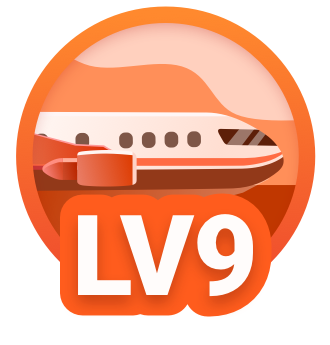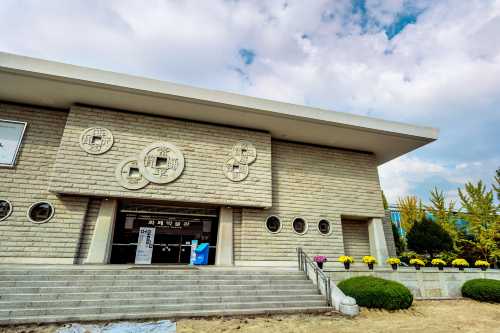Popular Trip Moments
A Taste of April: Madeleine Patisserie in Daejeon 🍰✨ | Cafe 1968: Your Relaxing April Respite in Yuseong ☕🍰🌸 | Yurim Park's Tulip Tapestry: An April Day's Delight 🌷☀️ | Yuseong Riverside Bloom: An April Day's Dream of Double Cherry Blossoms and Azaleas 🌸☀️ | Daejeon indoor date recommendation, emotional prop shop Ricable✨ | [🇰🇷Daejeon] Heegiimja: A popular cafe in Bankok-dong that's worth the wait | A day trip that ends 10 minutes away from Daejeon Station | Recommended Outdoor Date Spots in Daejeon for Cherry Blossom Viewing | Campus in Bloom: Chungnam National University's Delightful Spring Cherry Blossoms | The leisurely beauty of a wide space. Recommended emotional cafe in Daejeon - Cafe T | Mokcheok Park: Your Local Haven for Cherry Blossom Magic | Springtime Serenity: Cherry Blossom Strolls in Mokcheok Park | Pink Petal Paradise: Discovering Spring at Mokcheok Park | Mokcheok Park: A Neighborhood Gem for Cherry Blossom Beauty | Mokcheok Park's Pink Embrace: A Charming Cherry Blossom Escape | A Neighborhood Sparkle of Cherry Blossoms | Sunny Strolls in Wolpyeong: Discovering Spring's Cherry Blossom Touches | Yuseong-gu Bathed in Sunny Cherry Blossom Splendor | Yuseong's Sunny Spectacle: A Cherry Blossom Dreamscape in Full Glory | A Breath of Spring Air: Exploring Daecheong Park's Rejuvenating Landscape | Finding Spring's Rhythm: A Stroll Through Daecheong Park's Natural Melody | Daecheong Park: A Canvas of Fresh Greens and Floral First Strokes | Champ Space Coffee Roasters: A Coffee Lover's Haven in Soje-dong | ‘Kimhwa Kalguksu’, a famous kalguksu restaurant near Daejeon Station | Jangtaesan Recreational Forest – Blossoms Beneath Towering Trees | Eco Lake Park – Urban Blossoms with a Tranquil Vibe | Daejeon Baked Goods Restaurant Recommendation ‘Jeongdongmunhwasa’ | Daejeon Cherry Blossom Road Recommendations | Jinsoo Gopchang Bongmyeong-dong | All Air Cocktail
Popular Travel Types
Recommended Attractions at Popular Destinations
Bangkok attraction near me | Manila attraction near me | Tokyo attraction near me | Taipei attraction near me | Hong Kong attraction near me | Seoul attraction near me | Kuala Lumpur attraction near me | Los Angeles attraction near me | Shanghai attraction near me | New York attraction near me | Shenzhen attraction near me | Osaka attraction near me | Singapore attraction near me | London attraction near me | Guangzhou attraction near me | San Francisco attraction near me | Beijing attraction near me | Macau attraction near me | Bali attraction near me | Jakarta attraction near me | Paris attraction near me | Ho Chi Minh City attraction near me | Istanbul attraction near me | Phuket attraction near me | Chicago attraction near me | Seattle attraction near me | Toronto attraction near me | Orlando attraction near me | Cebu attraction near me | Chiang Mai attraction near me
Popular Attractions
Jinsha Site Museum | 4 Elements Night Club Tirana | Tai Hu Yuantouzhu Scenic Spot | Seven Wells Waterfall | SHIBUYA SKY | Qujiang Polar Ocean Park | North Bridge | Yiyuan Garden | Singapore River | Universal Studios Singapore | Hong Kong Space Museum | Daming Temple | Te Anau Glowworm Caves - RealNZ | Jiufen Old Street | Gumulan Yard Shita | Bog' | Christ Church Melaka | Wumeng Grass Plain | Hells Gate | Shanghai International Fashion Center | Tai Kar Luck Station | Pedras do Encontro | Kitamachi Shinmei Park | Lemon Bar | Casa de los Enanos del Bosque Encantado | SANT PATHIK JI ASHRAM | Masjid Babussalam (LDII) | Musholla al ikhlas | InterCar Orlando - Used Cars - Wholesale and Retail Used Cars | Mount Diablo State Park - North Gate Entrance
Popular Restaurants in Daejeon
hachi cafe | 성심당 | Kimyoungwoo Coffee | Seongsimdang | Pyeongyangok | Hyeseongok | Moru Brunch Cafe Dunsan | Flying Pan | Ganamji | Jinro Jip | Myeongrang Sikdang | Wimo | Gom Espresso Main | Vesta Buffet | Siru Hyanggi Daejeon Sinseong | Sutgorwon Naengmyeon | Hanbat Kalguksu | Very Shinjuku | Ildang Gamjatang | Solbat Mukjip | Jeokdeok Sikdang | Nu Bo Ol | Charcoal Gol Won Cold Buckwheat Noodles | Seongsimdang Cake Bu Ddi Kkeu | Ddu Babi Ang | Little Wing | Yussi Ne Bueok | Gatpohosan | Yuseong Bokjip | Santa Claus
Popular Ranked Lists
Popular Best Things to Do in Renhua | Popular Best Things to Do in Sheyang | Popular Local Restaurants in Guangzhou | Top 11 Best Things to Do in Chifeng | Popular Luxury Hotels Near Thermi | Top 3 Best Things to Do in Yanji | Popular Local Restaurants in Kyoto | Top 9 Local Restaurants in Nha Trang | Top 8 Local Restaurants in Fujikawaguchiko | Top 5 Best Things to Do in Kangding | Popular Best Things to Do in Heyuan | Popular Best Things to Do in Taoyuan | Popular Luxury Hotels in Fes | Popular Luxury Hotels Near Silivri | Top 7 Best Things to Do in Yulin | Popular Luxury Hotels Near Century City | Popular Luxury Hotels Near Naxos | Popular Local Restaurants in Hanoi | Popular Luxury Hotels Near Jezerce | Top 10 Local Restaurants in Boracay Island | Top 9 Best Things to Do in Turpan | Top 18 Local Restaurants in Kunming | Top 5 Best Things to Do in Altay Prefecture | Top 16 Local Restaurants in Langkawi | Top 19 Local Restaurants in Chiang Mai | Popular Local Restaurants in Bali | Top 19 Local Restaurants in Singapore | Popular Luxury Hotels Near Tonosho | Top 13 Local Restaurants in Abu Dhabi | Top 10 Local Restaurants in Kota Kinabalu
Payment Methods
Our Partners
Copyright © 2025 Trip.com Travel Singapore Pte. Ltd. All rights reserved
Site Operator: Trip.com Travel Singapore Pte. Ltd.
Site Operator: Trip.com Travel Singapore Pte. Ltd.




















